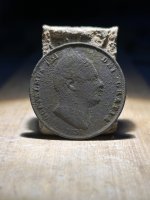cornelis 816
Sr. Member
- Sep 3, 2010
- 466
- 47
FISHEYE , On October the 10th , 2007 you posted a panflet having to do with wrecks in Florida . It was marked as RE : 1641 NE Fleet . It starts with 1523 Two ships and their crew are lost during a hurricane on the West Florida coast . ( pre 1700 ) . Could you post the wrecks mentioned on the west coast again to us ? Cornelius







